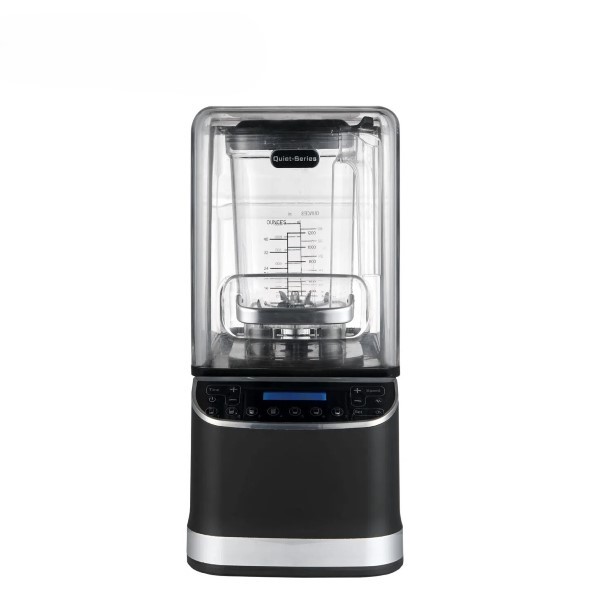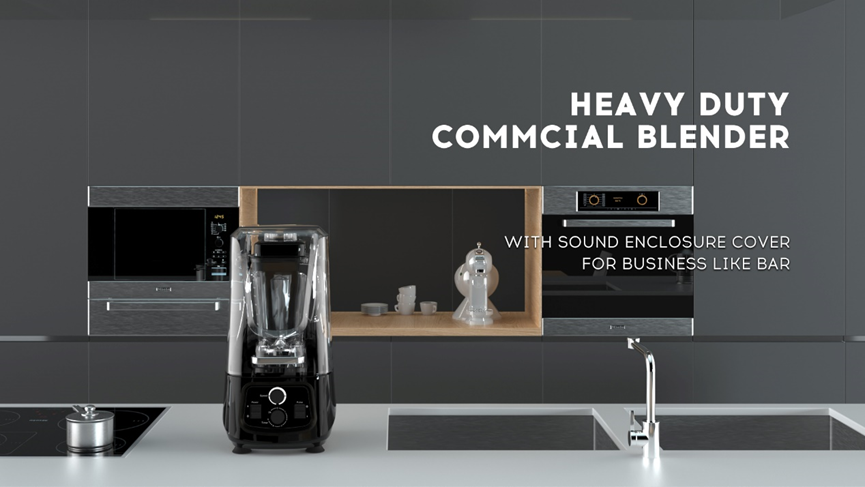Streamlining Your Workflow with Efficient Blender Use: Maximizing Productivity in Manufacturing
release time:
2025-06-02
Streamlining Your Workflow with Efficient Blender Use
Table of Contents
- 1. Introduction to Efficient Blender Use in Manufacturing
- 2. Benefits of Using Efficient Blenders in Your Workflow
- 3. Types of Blenders and Their Applications
- 4. Best Practices for Maximizing Blender Efficiency
- 5. Importance of Regular Maintenance for Blenders
- 6. Integrating Blenders into Your Manufacturing Workflow
- 7. Case Studies: Companies Optimizing Workflow with Blenders
- 8. Frequently Asked Questions
- 9. Conclusion
1. Introduction to Efficient Blender Use in Manufacturing
In the realm of manufacturing, **efficiency** is not merely a goal but a necessity. Among the many tools available, blenders and mixing machines play a pivotal role in enhancing productivity. By optimizing the use of these machines, businesses can not only save time but also improve product quality. This article aims to explore how to streamline your workflow through the efficient use of blenders, ensuring that your manufacturing operations are both effective and competitive.
2. Benefits of Using Efficient Blenders in Your Workflow
Implementing efficient blender systems in your manufacturing process yields numerous benefits:
Enhanced Mixing Quality
Efficient blenders provide consistent and uniform mixing, which is critical for maintaining product quality. This consistency reduces the likelihood of defects and ensures that every batch meets quality standards.
Time Savings
Modern blenders are designed to operate quickly. By reducing mixing times, businesses can accelerate their production schedules and meet customer demands without compromising quality.
Cost Reduction
Using blenders effectively can lead to cost savings by minimizing waste and optimizing ingredient usage. Efficient blending reduces the amount of raw materials needed, thereby lowering production costs.
Increased Flexibility
With various blending options available, manufacturers can adapt their processes to accommodate different materials and product lines, thereby enhancing overall workflow flexibility.
Improved Safety
Modern blenders often come equipped with safety features that help to reduce the risk of accidents and ensure a safer working environment for employees.
3. Types of Blenders and Their Applications
Understanding the different types of blenders and their specific applications is crucial for optimizing your workflow.
Batch Blenders
Batch blenders are ideal for processes where precise ingredient measurements and mixing are required. They are commonly used in the food, chemical, and pharmaceutical industries.
Continuous Blenders
These machines are designed for high-volume production, allowing for constant mixing without interruptions. Continuous blenders are frequently used in large-scale manufacturing processes.
High-Shear Blenders
High-shear blenders provide vigorous mixing and are suitable for emulsifying, dispersing, and homogenizing materials. They are often used in cosmetic and food production.
Planetary Mixers
Planetary mixers are versatile machines that can handle a wide range of materials, from light to heavy mixtures. Their unique mixing action allows for thorough blending, making them suitable for bakeries and confectioneries.
Ribbon Blenders
Ribbon blenders are effective for mixing dry powders and granules. They offer efficient mixing and are commonly used in the pharmaceutical and agricultural industries.
4. Best Practices for Maximizing Blender Efficiency
To ensure you are getting the most out of your blenders, consider the following best practices:
Regular Calibration
Ensure that your blenders are regularly calibrated to maintain precision in mixing. This helps in achieving consistent results and reduces material waste.
Optimize Loading Techniques
Loading the ingredients efficiently can enhance mixing performance. Use the correct loading order and avoid overloading to maintain optimum performance.
Monitor Operating Conditions
Keep an eye on temperature and pressure settings during blending. Maintaining optimal conditions can prevent overheating and improve blending efficiency.
Train Staff Effectively
Invest in training your staff on the proper use and maintenance of blending equipment. A well-informed team can operate machinery more effectively and safely.
Utilize Automation
Incorporating automation in your blending process can significantly enhance efficiency. Automated systems can monitor blending parameters and adjust operations in real-time.
5. Importance of Regular Maintenance for Blenders
Regular maintenance is vital for the longevity and efficiency of blenders. A well-maintained machine operates better, resulting in higher product quality and fewer breakdowns.
Scheduled Inspections
Implement a schedule for regular inspections and maintenance checks. This should include checking for wear and tear, functional testing, and cleaning of the machinery.
Parts Replacement
Be proactive about replacing worn-out parts. By addressing small issues before they escalate, you can prevent costly downtime and repairs.
Cleaning Procedures
Establishing thorough cleaning procedures is essential to prevent cross-contamination and ensure product integrity, especially in industries dealing with food and pharmaceuticals.
6. Integrating Blenders into Your Manufacturing Workflow
Integrating blenders into your workflow requires thoughtful planning and execution. Here are steps to consider:
Assess Workflow Needs
Evaluate your current manufacturing processes to identify areas where blending can be optimized. Look for bottlenecks or inefficiencies that can be addressed.
Select the Right Blending Equipment
Choose blending equipment that meets your specific production needs. Consider factors such as capacity, blending speed, and the types of materials you will be working with.
Develop Standard Operating Procedures
Create detailed operating procedures for your blending processes. This should include instructions on machine operation, safety protocols, and maintenance guidelines.
Monitor and Adjust
Continuously monitor the performance of your blending processes and be prepared to make adjustments as necessary. Use data analytics to track efficiency and output.
7. Case Studies: Companies Optimizing Workflow with Blenders
Examining real-life examples of companies that have successfully optimized their workflows with efficient blender use can provide valuable insights.
Case Study 1: Food Manufacturing
A food manufacturing company integrated high-shear blenders into their production line, reducing mixing time by 30%. This not only improved output but also enhanced product consistency.
Case Study 2: Pharmaceutical Production
A pharmaceutical company adopted ribbon blenders, leading to a 25% reduction in material waste. By optimizing their mixing process, they improved their overall production efficiency significantly.
Case Study 3: Cosmetics Industry
A cosmetics manufacturer implemented automated blending systems, allowing for better control over their mixing parameters. This resulted in higher product quality and reduced labor costs.
8. Frequently Asked Questions
What are the key factors in selecting a blender for my manufacturing process?
Consider the type of materials you will be mixing, the volume of production, and the level of precision required. Additionally, evaluate the cost, maintenance needs, and available space.
How often should I perform maintenance on my blenders?
Establish a routine maintenance schedule based on usage. Generally, monthly inspections and thorough cleaning after every shift are recommended.
Can blenders be used for both solid and liquid materials?
Yes, many modern blenders are designed to handle a variety of materials, including both solids and liquids. However, ensure you select the appropriate type for your specific needs.
What safety features should I look for in a blender?
Look for blenders with safety guards, emergency stop buttons, and automatic shut-off features. These can help prevent accidents in the workplace.
How can automation enhance blender efficiency?
Automation allows for real-time monitoring and adjustments to blending parameters, improving precision and reducing the likelihood of human error during operation.
9. Conclusion
Efficient blender use is integral to streamlining workflows in manufacturing. By understanding the different types of blenders, embracing best practices, and investing in proper maintenance, businesses can significantly enhance their productivity and product quality. The application of these strategies not only leads to cost savings but also positions companies to compete effectively in an ever-evolving industry landscape. Embrace the power of efficient blending and watch your manufacturing operations thrive.
More information






